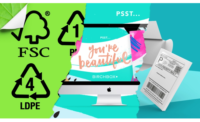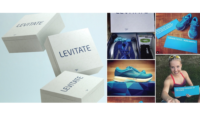The Importance of Material Honesty
A closer look at one of the top packaging design trends shaping up for 2019.








In the September issue I talked about the “Top 3 Packaging Design Trends Shaping Up For 2019,” which includes Material Honesty, Rethinking Retail Packaging and Creative Production.
The first of those is Material Honesty and what to consider when selecting materials for retail packaging or product packaging. With so many choices, it’s easy to understand the confusion and the difficulty brands have in selecting the right materials for their brand packaging. Today we’re seeing the negative impacts of unsorted recycling. China’s National Sword policy, for one, has reduced the amount of recycled materials the U.S. is able to export. Recyclers are having to incinerate or landfill much of what’s being collected around the country.
However, there are positive discussions happening around the #PlasticStrawBan and the efforts to reduce plastic in packaging. Many brands are also taking responsibility for their packaging by removing it from curbside-collected waste streams. The future of packaging is just getting started, so let’s dive into materials and how substrates are informing this packaging design trend.
Designing with Materials
With so many materials on the market today it’s hard to know where to start. Because we know that packaging design delivers an experience, we should therefore begin with creating for the senses: sight, touch, sound and sometimes even taste. Paper’s natural tooth, hand-feel and warmth contrasts the sleek screens we interact with daily. Paper’s weight, thickness and color has everything to do with altering a consumer’s perception. When selecting textured substrates, the organic movements found in a felt textured sheet can be perceived as natural or less processed. Compare that to a geometrically embossed sheet that can create a sense of futurism or speed, and you can see the important role substrates play in creating an unboxing story.
There are many ways to achieve color, such as printing, dying pulp, coatings and several others. Each has its pros and cons depending on the packaging design requirements and specific brand expectations. The quality of color, when printing, is always dependent on the quality of the substrate—the substrate’s core color, PCW (Post Consumer Waste) content and other variables that include ink composition. When designing with colors it’s important to know the impact it has on consumer perception. For example, a fragrance with red packaging could imply notes of cinnamon or spice while the same fragrance packaged in green can inspire earthy wood scents. Geography plays a role in color selection as well since colors have different meanings around the world. Local consumer ptesting is always encouraged.
Compostable, Degradable or Biodegradable?
With new materials making eco-claims daily, consumers fail to see the difference between compostable, degradable and biodegradable. Degradability claims have no decomposition speed requirements associated with them as of this writing. These materials placed in curbside recycling can degrade in one month, three years or 100 years. Be sure to ask about the requirements for optimal decomposition speeds when designing with these materials. If industrial processing is required for proper breakdown, consider how the brand will ensure proper disposal.
Degradable materials simply breakdown into smaller bits. Petroleum-based plastics breakdown into micro-plastics and become harder to sort. Degradable materials are also not compostable. Proper degradation occurs in specific environments that combine exposure to sunlight (UV), oxygen and heat—all of these things are missing from a landfill scenario.
Biodegradable materials are broken down by fungi or bacteria into carbon dioxide, water and other naturally occurring elements. This doesn’t mean you can throw them in your yard and watch them disappear. In fact, there are industrial composting facilities that are available to process your biodegradable materials. These facilities simply do not pick-up curbside.
Compostables and bio-plastics are similar to biodegradable plastics in their make-up and are processed much the same way. Neither degrade in landfills, nor are they recyclable in your curbside bin. Placing compostable, degradable or biodegradable materials into your curbside recycling bin contaminates the waste stream. The quality of the resulting recycled materials is compromised by these materials as they are meant to breakdown. Consumers with good intentions have been attempting to recycle these materials for years, and they have unknowingly compromised our waste streams. The results of these compromised waste streams can be seen in the state of recycling today and in China’s National Sword policy.
The future’s not all bleak, though. As consumers are demanding fewer plastics overall, brands are being urged to focus on papers, reusables and to take ownership of their own waste. Removing the recycling responsibility from consumers is a step in the right direction, and it allows for previously unrecyclable materials to be collected and recycled en masse.
What Can Be Done Today
Partner with companies, like Design Packaging, that work toward increased PCW papers, reusable packaging for retail and ecommerce solutions, as well as educating both consumers and brands on what sustainability will look like in the future. Yes, there are a lot of materials to choose from, but understanding their true impact on the environment comes with digging deeper and asking the hard questions. Operations and logistics teams work closely with each brand, material supplier and manufacturing partner to streamline our supply chain and reduce carbon footprints daily. If you’re interested in learning more about environmentally friendly or closing the loop on packaging design, we’re ready when you are.
Looking for a reprint of this article?
From high-res PDFs to custom plaques, order your copy today!











